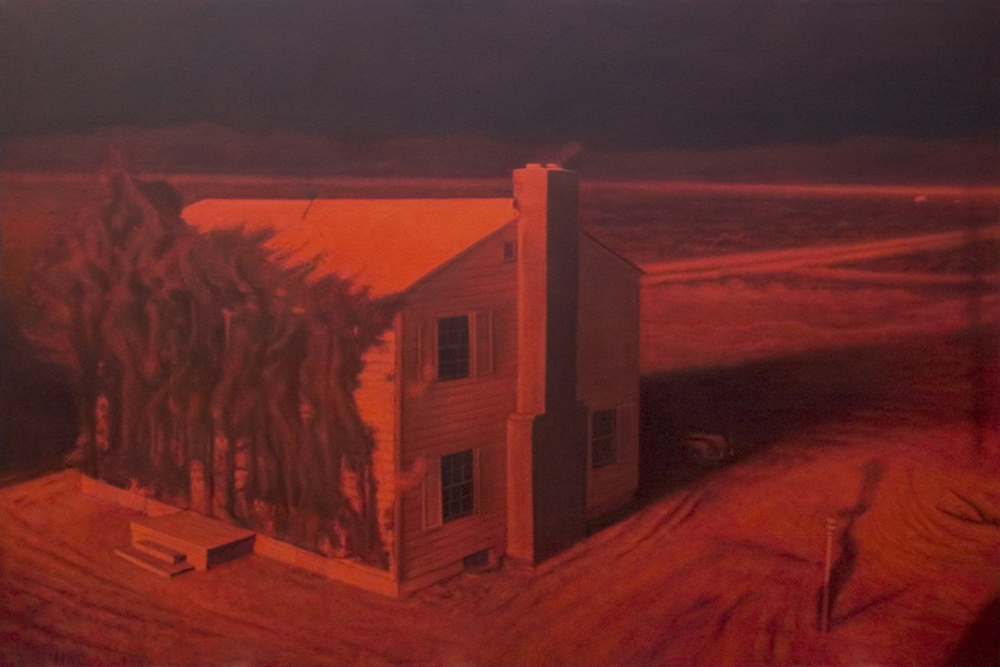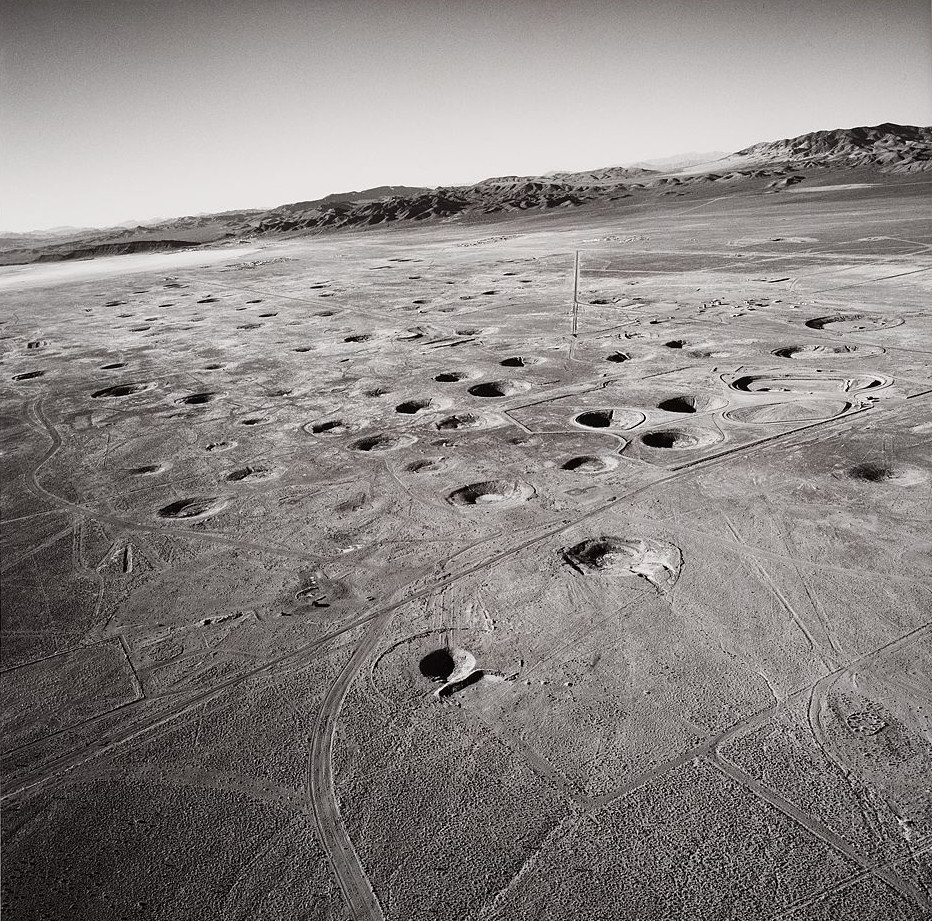
Robert Beckmann, The Body of a House #2, 1993, oil on canvas. Collection of the Nevada Museum of Art, Museum purchase with partial funding from City of Reno Arts & Culture Commission.
While we write a lot about science and technology in this space, we haven’t talked much about how art contributes to the fields of science, technology, engineering and math. Well, that’s about to change.
In a partnership with the Desert Research Institute’s Science Alive program, the Nevada Museum of Art plays host to the inaugural Nevada STEAM conference on February 24, 2018, from 8 a.m. to 5:30 p.m. The Governor’s STEM Advisory Council is happy to support this important initiative, along with the Nevada Department of Education.
The sold-out conference is free for Nevada teachers and includes .5 in-service credits. Continental breakfast, lunch and a happy hour reception are also included.
The NV STEAM Conference promises to “inspire creative innovation through engaging, hands-on workshops and nationally recognized keynote speakers.”
Nevada Museum of Art Charles N. Mathewson Director of Education Marisa Cooper says the daylong conference will give attendees practical tools they can use to inspire their students right away. “They’ll have access to lesson plans and other activities they can roll out as soon as they get back to the classroom.”
And why is it important to add the A to STEM? “If we want our students to be the next generation of innovators, we have to support their ability to think creatively,” Cooper explains. “That doesn’t come from STEM alone. We need to leverage the arts to create a well-rounded and capable next generation.”
Much of the STEAM conference will tie in with the “The Nuclear Landscape” exhibition, on display at the Museum through January 6, 2019, which is described like so:
“Nevada’s past and future are closely intertwined with the nuclear history and politics of the United States. Under the jurisdiction of the U.S. Department of Energy, the Nevada Test Site (now the Nevada National Security Site) — located just 65 miles northwest of Las Vegas — saw the detonation of 928 nuclear devices between 1951 and 1992. Visual artists from around the world have responded in a myriad of ways to this nuclear legacy — and the Nevada Museum of Art houses a number of artworks in its permanent collection related to this subject matter."

Emmet Gowin, Subsidence Craters on Yucca Flat, Nevada Test Site, 1997. Gelatin silver print, Sheet: 20 x 16 inches. Collection of the Nevada Museum of Art, The Altered Landscape, Carol Franc Buck Collection.
There will be two keynote speakers presenting in the Museum’s Nightingale Sky Room, both with a connection to the Nevada Test Site:
- AM Session: Dr. Charles Falco, an experimental physicist who serves as chair of condensed matter physics and professor of optical sciences and physics at the University of Arizona. Falco spent eight years at Argonne National Laboratory, initially formed to carry out Fermi’s work on nuclear reactors as part of the Manhattan Project, and later designated as the first national laboratory in the United States focused primarily on nuclear physics, designing and building the first power-producing nuclear reactors. With the publication of the Hockney-Falco Thesis, Dr. Falco is best known for his exploration of the relationship between art, physics, and humanity. His topic is “The Geography of Art and Optics.”
- PM Session: Robert Beckmann, a renowned artist, recipient of the Governor’s Award for Excellence in the Arts from the State of Nevada in 1996, and a Nevada State Arts Council and the Western States Arts Foundation fellowship winner, will talk about “The Body of a House.” Beckmann is best known for his paintings entitled The Body of a House, which has toured 20 museums across the United States and Russia, and is part of the permanent collection of the Nevada Museum of Art. In this series of eight large-scale canvases, Beckmann will reveal the rapid disassembly of a house by a nuclear explosion on the Nevada Test Site.
In addition to the keynote speakers, attendees can choose which workshops, out of a variety of subjects, that they’d like to attend, including:
- Getting F.R.E.E. While Helping Students Learn, presented by: FREE, Truckee Meadows Community College
- STEAM Powered Maker Spaces, presented by: The Generator
- Atomic Arthaus: The Making & Meaning of Mushroom Clouds, presented by: Aimee Littlewood Allen, Littlewoodcreative.com
- The Sub-Atomic Structure of Matter (K-5), presented by: The Terry Lee Wells Nevada Discovery Museum and the Las Vegas Discovery Children’s Museum
- The Art of the Nuclear Landscape: Inquiry Based Gallery Tour, presented by: The Nevada Museum of Art, Gallery Education Team
- Arts Integration: Authentic and Engaging Arts Strategies for STEM Learning, presented by: Sierra Arts Foundation
- Science Theater: Exploring Forms of Energy (K-4), presented by: Get in the Act! Science Theater
- The Sounds of the Nuclear Landscape, presented by: DRI Scientist Ted Hartwell
- Nuclear Trinitite: The Science and Art of Glass Fusing, presented by: Donna Smit, Copper Cat Studios
- Capturing Radiation: Painting the Power of the Nuclear Blast, presented by: Rachel Stiff
- Historical Art of the AEC: Color Washing and Image Transfer, presented by: Nevada Museum of Art
The Museum has hosted similar events over the last three years and Cooper says this year’s conference evolved organically from that. “It was so successful because of the amazing collaboration involved in putting on something of this magnitude,” she says. “And we have the same level of participation this year, so we know it will be outstanding.”
This year’s STEAM Conference has sold out, but to be added to the waitlist please email marisa.cooper@nevadaart.org. Teachers, be on the look-out for next year’s gathering in Las Vegas. To learn more, visit nvsteam.org.
In addition to the organizations listed above, the conference is made possible through the support of Switch, Nevada Ready, the Smith Center, the Discovery Museum and the Las Vegas Discovery Children’s Museum.